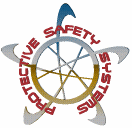| The hospital security officer
training course is four days in length. We do, however, adapt to agency
specifications regarding allotted time, course content, scheduling, and
other requirements. The purpose of this course is to train hospital
security officers to provide reliable physical protection within the
parameters of policy, and their specific job requirements. The skills
we teach are based on attributes of professionalism, including situation
/ response analysis, psychology of deterrence, attack management,
security tactics, legal decision making, and a clear definition of
responsibility and authority.
While officers who have not received high quality, reality based
training may deter, their response during unusual or emergency
situations may not be predictable or reliable. Our training has several
main objectives. They are to:
- aid the officer in presenting a respectable and competent
presence in routine operations,
- provide the officer with skills for use in unusual and emergency
situations, and
- provide management with a logical and consistent framework for
planning, response, control, and after-action analysis and
justification.
Participants consistently tell us that this course is both demanding
and rewarding. Critiques from veteran officers and instructors who
attend our courses frequently contain the statement, "this is the best
training I have ever received."
Our techniques and methods are highly effective and reality based,
but more importantly, our formula for situational training allows
trainees to face routine and emergency situations similar to their job
conditions and parameters. The human brain learns and stores techniques
(motor skills), and situational recognition and decision making in two
very separate ways. Learning only a technique may have little or nothing
to do with its application in real life. Conversely, learning
situational decision making may be unreliable and ineffective without
practical and useful methods and procedures.
For those who carry firearms, integrating all response modes is of
the highest importance. Usually, the officer’s state of training and
preparation is assumed to be acceptable, since routine situations do not
call for use of force. If an officer’s routine behavior is perceived as
acceptable, his/her probable emergency behavior would be assumed to be
acceptable. However, one has little to do with the other.
Our training causes officers to employ all of their available means
of control appropriately in virtually all relevant job tasks. We employ
simulated ammunition and operational (but safe) firearms, inert OC,
and baton simulators in our situational training for those who will be
carrying those instruments. We also employ radio systems and simulated
supervision, as well as apply the agency’s policy during simulation
training. If an agency lacks policy, we use our policies. We also
confidentially suggest force and tactics related policy additions or
modifications to agency management.
At the end of this training, the officer will be able to:
- determine when the potential for violence is present,
- make proactive determinations when to:
- request the aid of a supervisor,
- alert others,
|
Hospital Security
Officer Course |
- request assistance,
- recognize tactical limitations of armed/unarmed security
officers,
- make appropriate on-the-spot decisions regarding the use of
force and tactics,
- employ safety tactics to:
- observe, sweep, and secure rooms and other areas,
- respond to alarms and probable emergencies,
- use verbal direction (persuasion, advice, and warning) to
control subjects,
- use physical control methods for self-defense,
- stabilize situations pending arrival of outside law enforcement
assistance authorities, and
- provide physical protection to others.
Instructional fee includes:
- Manuals and other instructional equipment for trainees.
- Initial research and consultation into agency policy, training
objectives, and history and patterns of related problems.
In short, as with other elements of total training design,
appropriate, valid, and reliable testing for open psychomotor skill
testing was lacking, so we developed it. As with the Use of Force Model,
no other training concern that we know of has these types of testing
instruments, unless copied from those which we developed.
COURSE COMPONENTS
The following are major components of the training. Each of these
components is broken down into sub-components, including simulations.
All components are integrated, enabling the officer to flow easily from
one to another as the situation changes.
- Principles of Control, including
- Use of force
- Psychology of conflict
- Physics of control / Body mechanics
- Attack management theory and methods
- Assailant Control
- Resister Control
- Cooperative Subject Control and Tactics
- Tactical Communications and Persuasion
- Extendible Baton
- OC
- Hospital Security Procedures and Tactics, including observation,
deterrence, and response at:
- Parking lots and exterior areas
- Emergency room
- Public / commercial areas and lobbies
- Handling mental subjects
- Prisoner security and response
- Integrating all security components
- Providing Protection for Others
- Integrated Firearms (if applicable), and Operational Training
- Incident Report Writing
To receive certification, candidates must pass written, performance,
and situational assessments. These assessments determine competency
based on established professional attributes and standards of
responsibility.
Return to the Top
|

